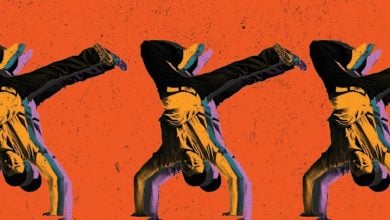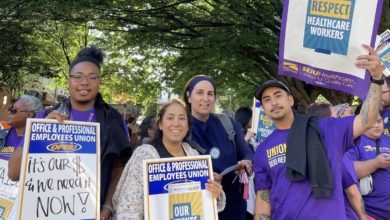“It was cheaper to use N——-s than cats.”
—Harry Bailey, an Australian psychiatrist, describing experiments performed on Black prisoners at Tulane University in the 1950s

Harriet Washington’s new book, “Medical Apartheid,” brings to light the disturbing history of medical experimentation on Black Americans. After many years as a medical researcher and journalist, she wrote the book to fully document the gruesome history of the abuse of medical experimentation. It is an effort to record important history and also to contribute to ending current healthcare disparities.
As Washington says, trying to understand the current problems of Blacks and health care without an understanding of this history is like “trying to treat a patient without eliciting a thorough medical history.”
The history of the Tuskegee experiment is well known. Four hundred Black men were allowed to go untreated for syphilis for 40 years so that doctors could study the disease. Washington shows that this was no isolated incident. Throughout this country’s history, she argues, African Americans have been the main subjects of medical experimentation and abuse, almost always against their will. Black subjects were chosen to test all sorts of medical techniques and vaccines before they were used on anyone else.
“Medical Apartheid” shows that these abuses were not limited to crackpot fringe doctors. Some of the most revered doctors in some fields, as well as many top medical schools and journals, allowed these practices.
For these doctors and medical schools, the prejudices of the day justified their behavior. Since they considered African Americans to be an inferior race, it was acceptable to perform all kinds of heinous procedures on them to perfect medical knowledge. They knew that African Americans did not have the social position to fight back against such abuse. They also knew that the overwhelmingly homogenous composition of the medical world would not object. It was the perfect situation to perform and perfect medical procedures with no oversight.
Savior and sadist
James Marion Sims may be a name familiar to some readers. There is a statue of him in Bryant Park, just outside the famed New York City Public Library. He is widely recognized as the first “women’s doctor,” or gynecologist, and he perfected many techniques used today.
While practicing medicine in Alabama in the 1840s, he bought three female slaves—Anarcha, Betsy and Lucy.
In a shack at the back of his house, Sims performed over 40 operations on the women, without anesthesia. He used them to develop various gynecological surgery techniques. In fact, three doctors who assisted him quit after a few months because of the anguished women’s screams. Sims would purposefully allow wounds to open, reopen, and get infected in order to study the effects. In the periods between operations, the enslaved women would be addicted to morphine in order to prevent them from running away.

As a result of these sadistic experiments, Sims was able to perfect several medical procedures that are now considered critical to women’s health. How he came about that knowledge has sadly been forgotten until now.
During the period of U.S. slavery, there are other equally hideous examples. In order to find a cure for sunstroke, one Dr. Thomas Hamilton of Georgia forced a slave to sit naked on a stool, buried in a pit of burning embers up to his neck, to see how long it took him to pass out. Hamilton later became a trustee at the Medical College of Georgia.
Washington relates examples of doctors throwing scalding hot water on patients suffering from malaria to see if it would end their chills and fatigue. One of the U.S. “founding fathers,” Thomas Jefferson, fancied himself an amateur physician. He was known to directly inject his slaves with smallpox in an effort to test his various theories about vaccination.
Of course, African Americans were subjected to this sort of torture-as-medicine during slavery, because they were considered property rather than people. Doctors did not even hide what they were doing. They wrote about it in medical journals.
Washington notes that experimentation on the enslaved body was profitable, both for the doctors and white people “who benefited when the procedures were perfected.” But these practices were not restricted to the period of slavery.
‘Prisoners make great subjects’
From the 1950s to the 1970s, thousands of Black men had various experimental medical procedures performed on them at Holmesburg Prison near Philadelphia, Pa. These experiments, carried out under the direction of Dr. Albert Kligman, were funded by 33 major pharmaceutical and cosmetics companies like Merck and Dupont.
Kligman exposed prisoners to herpes, gonorrhea, malaria, dysentery and even athlete’s foot. These tests were not conducted in secret. In fact, the scars and skin conditions left by his experiments were cited by members of Philadelphia’s Black community as a way of telling whether or not someone was an ex-convict. In 1965, Kligman was able to publish an article on some of this research in the Journal of the American Medical Association. On reading the article, the Food and Drug Administration became alarmed and suspended Kligman from performing experiments—for one month.
In another case documented by Washington, over 300 Black inmates at an Ohio state prison were injected with live cancer cells in 1952 so that doctors at the Sloan-Kettering Institute could study the effects.
A ‘medical apartheid’
Harriet Washington’s encyclopedic cataloging shows that these cases are just the tip of the iceberg. But more importantly, she is able to pinpoint the many reasons this sort of research was carried out on African Americans. More than just the unchallenged racism in the medical field dominated by upper-class white men, the experimentation reveals the fact that wider society was not particularly worried about or concerned for the welfare of African Americans.
These realities of the abuse carried out in the name of medical experimentation have resulted in an unfortunate wariness of medical care by many African-Americans. They are only one of many factors that has helped create a virtually separate medical system for poor African Americans compared to their white counterparts—a “medical apartheid.”
Washington’s book contains a great deal of information. She documents cases from slavery to current times. She also finally gives voice to some of the many thousands of Black victims of racist medical practices.
This book deserves a wide reading by activists who are involved in the struggle against racism and for social justice in the United States. This chapter of history must finally be made known to a wider audience. Shining light on these horrible crimes carried out in the name of research can be an important step to highlighting the horrible disparities in all areas of health policy when it comes to race.
For those who seek an end to all sorts of racist healthcare disparities and abuses, we need to attack the capitalist system that puts profits over patients. Harriet Washington’s book is yet another reminder why a just society based on human needs is urgently needed if the crimes of the past are not to be repeated.
Photo: Random House Publisher
Medical ‘experimentation’ on Black prisoners at Holmesburg prison in 1966
Photo: TempleU.UrbanArchives,Phila.






